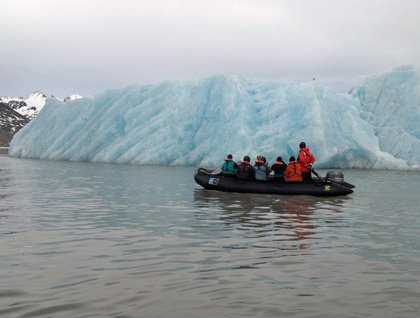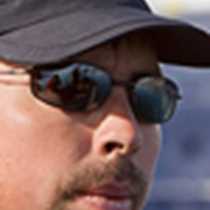During night the ship took us into Liefdefiord—one of the most scenic fiords in all of Svalbard. The name is Dutch, and liefdefiord means “Love Bay.” This area is named after Prince Albert of Monaco, a pioneer explorer in Svalbard in the early 1900s. His grandson, also known as Prince Albert, has been up here in recent years, exploring Arctic Svalbard.
The glacier (Monacobreen) has been calving large amounts of icebergs into the fiord, testament to its recent activity. It is very impressive to be at a safe distance and watch massive icebergs calve off the glacial face. This week we had a spring tide, which might explain the amount of huge icebergs in the fiord as we approached.
Due to the great weather—blue skies and no wind—we decided to launch kayak operations and Zodiac cruises. It is an impressive experience to paddle a kayak in between icebergs, bergy bits and growlers. We can only imagine the feeling the early travelers must have felt as they got trapped in ice as we easily navigate in our ice-enforced ship and bomber Zodiacs.
The Zodiac cruises took us all the way to the glacier front, where we could hear the glacier and see occasional bits break from the face while large flocks of kittiwakes fed at the meltwater outflow from the glacier. We had great luck and found a Sabine’s gull resting on a growler in front of the glacier – a great experience and photo opportunity. Some of the icebergs were the size of the ship, some even larger than the ship. That is an impressive sight, and not so common to see up here around Svalbard.
With the amount of ice in the fiords, this reminds us of how vulnerable the Arctic is to a warmer climate. Monacobreen has, according to maps, retreated over two miles since it was mapped in 1966. The great amount of icebergs in the fiord also indicates that this glacier is still in retreat.
On our way back to Longyearbyen we headed out to a point where the depth goes from 400 meters down to 2000 meters. This is called the “drop off,” and is a great spot to look for whales.




